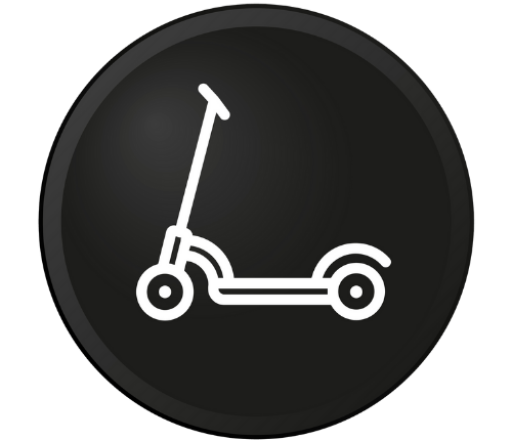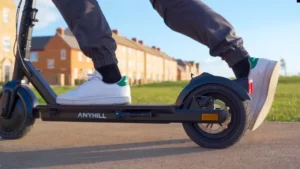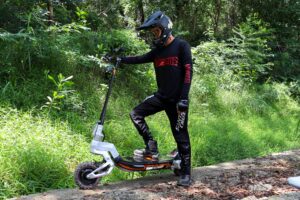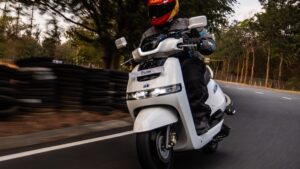Folding bicycles have gained immense popularity in recent years due to their portability, convenience, and versatility. Whether you’re a commuter navigating urban streets or an adventurer seeking compact transport, a folding bike can be an excellent investment.
This comprehensive guide will walk you through the essential factors to consider when buying a folding bicycle, helping you make an informed decision that meets your needs.
1. Determine Your Needs
Purpose
Before diving into specific models and features, consider how you’ll primarily use your folding bike:
- Commuting: Look for a lightweight, easy-to-fold bike with a comfortable design for daily use.
- Recreational Riding: Choose a bike with good performance and durability for weekend rides and leisure activities.
- Travel: Opt for a compact and portable bike that can be easily transported in cars, planes, or trains.
Terrain
Consider the types of terrain you’ll be riding on:
- Urban Streets: Smooth surfaces typically found in cities.
- Mixed Terrain: A combination of city streets, bike paths, and light trails.
- Off-Road: Rougher terrain, requiring sturdier construction and possibly suspension features.
2. Wheel Size
Folding bikes come with various wheel sizes, each affecting the bike’s performance and portability:
- 16-inch Wheels: Extremely compact when folded, ideal for short commutes and easy storage. However, they can provide a bumpier ride.
- 20-inch Wheels: A balance between portability and ride quality. Suitable for most commuters and recreational riders.
- 24-inch and Larger Wheels: Offer a smoother ride and better performance over longer distances but are bulkier when folded.
3. Folding Mechanism
The folding mechanism is a crucial aspect of a folding bike. There are several types:
- Half or Mid-Fold: The bike folds in half via a hinge in the frame. This is the most common type and offers a good balance between speed and compactness.
- Triangle Hinge: Involves multiple folding points, allowing for a very compact fold. It’s typically seen in high-end models.
- Breakaway: The frame disassembles into two parts. This method offers the most compact storage but can be more time-consuming to fold and unfold.
4. Weight
Weight is a critical factor, especially if you need to carry your bike frequently:
- Lightweight (Under 25 lbs): Easier to carry and lift, ideal for urban commuters.
- Mid-Weight (25-35 lbs): Offers a balance between portability and sturdiness.
- Heavyweight (Over 35 lbs): Usually feature-rich and more durable but can be cumbersome to transport.
5. Frame Material
The frame material affects the bike’s weight, durability, and price:
- Aluminum: Lightweight and rust-resistant, offering a good balance of strength and weight.
- Steel: Heavier but very durable and can absorb shocks well, providing a smoother ride.
- Carbon Fiber: Extremely light and strong, but also expensive and less resistant to impact damage.
- Titanium: Combines light weight with durability, but is typically found in high-end models due to its cost.
6. Gearing and Drivetrain
Consider the bike’s gearing system based on your riding needs:
- Single-Speed: Simple, low-maintenance, and lighter. Best for flat terrains and short commutes.
- Multi-Speed: Offers versatility for different terrains and longer rides. Look for bikes with internal hub gears for better protection and lower maintenance.
7. Comfort and Ergonomics
Comfort is key, especially for longer rides:
- Adjustable Handlebars and Seat Post: Ensure a proper fit and riding posture.
- Suspension: Some folding bikes come with front or full suspension to absorb shocks and provide a smoother ride on rough terrain.
- Saddle: Look for a comfortable, well-padded saddle suitable for your riding style.
8. Price and Warranty
Folding bikes come in a wide range of prices:
- Budget (Under $500): Basic models suitable for short commutes and occasional use.
- Mid-Range ($500-$1500): Better build quality, more features, and suitable for regular use.
- High-End ($1500 and Up): Premium materials, advanced features, and excellent performance for avid cyclists.
Check the warranty offered by the manufacturer, as it indicates confidence in the bike’s durability and provides peace of mind.
9. Brand Reputation and Reviews
Research different brands and read reviews from other cyclists to gauge the reliability and performance of various models. Established brands often offer better customer support and warranties.
10. Test Ride
If possible, test ride a few models before making a decision. Pay attention to how the bike handles, the ease of folding and unfolding, and overall comfort.
Conclusion
Investing in a folding bicycle requires careful consideration of your needs, terrain, and budget. By evaluating key factors such as wheel size, folding mechanism, weight, frame material, gearing, comfort, and price, you can find the perfect folding bike that suits your lifestyle.
Whether you’re commuting in a bustling city or exploring scenic trails, a folding bike offers unparalleled convenience and flexibility, making it a worthwhile addition to your transportation options.



